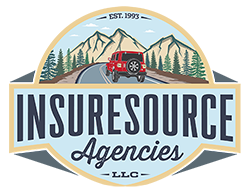No-fault laws were written to prevent that from happening. If you are in a car accident in Oregon, they will assume that your auto insurance conforms to a minimum standard coverage of $15,000 per person inside your car, regardless of who was at fault. There may be a small deductible of $250 on your policy, but you can reduce it to $0 for a small additional premium. You don't even have to have been inside a vehicle for the Personal Injury Protection (PIP) to take effect. You could be a pedestrian or bicyclist hit by another car, and the PIP coverage on your vehicle parked in your driveway at home would cover your hospital visit.
At-Fault Accident
Being involved in an accident is a horrible event in someone's life, and the injury often extends beyond just the physical. What's worse is finding out that you were the at-fault operator in the accident when the investigation is complete. Accidents do happen. In the time that it takes to glance at your phone, reach into the fast-food bag searching for a stray french fry, or attempt to calm a child passenger in the back seat throwing a tantrum, a driver can be distracted and not see a car stopped in the road ahead. If you or your passengers are injured and your car has insurance, you have, at a minimum, the Personal Injury Protection coverage. Most auto insurers will allow you to purchase more than the state minimum requirement. If you have medical coverage through work or pay for a personal or family plan, that coverage will begin where your auto insurance coverage ends if your medical bills for the accident exceed the limit on your auto policy. Your health insurance may include deductibles and copays that you will have to cover out-of-pocket.
Not-At-Fault Accident
If the accident investigation by the claims adjusters and police, if involved, reveals that you were not at fault in the accident, then the auto insurance of the other at-fault driver will cover your medical expenses beyond what your Personal Injury Protection pays, up to the limit they have on their insurance. If the medical costs for you and your passengers rise past that threshold, then you can rely on your policy to cover the rest through a mandatory coverage called Uninsured / Underinsured Motorist Coverage.
Suppose your medical bills total more than $100,000, and you have exhausted the $15,000 from your Personal Injury Protection. The other insurance settles with you for the $50,000 limit of their policyholder. That leaves you still owing the doctors and hospital the difference. Your Underinsured Motorist coverage can help pay for that difference; then, your company will attempt to recover those funds from the other company or the at-fault driver later on. That takes a lot of stress off you at a time when you need to focus on healing and returning to your everyday life.
Uninsured Accident
If neither driver has insurance of any kind at the time of a crash, all parties will be responsible for their medical bills. Once the fault is established, the driver presumed responsible for the accident will have the additional burden of paying everyone's medical bills out of pocket.

 We live in a state that requires drivers to cover themselves for medical bills generated by an auto accident, regardless of who was at fault in the crash. Imagine two competing ambulance services racing to the scene where you and your passengers hang upside down from your seatbelts, and the paramedics want you to prove you have insurance before they cut you loose and transport you to the hospital. Then, when you arrive at the emergency room, the admission staff must verify that your auto insurance will cover your treatment before they can proceed.
We live in a state that requires drivers to cover themselves for medical bills generated by an auto accident, regardless of who was at fault in the crash. Imagine two competing ambulance services racing to the scene where you and your passengers hang upside down from your seatbelts, and the paramedics want you to prove you have insurance before they cut you loose and transport you to the hospital. Then, when you arrive at the emergency room, the admission staff must verify that your auto insurance will cover your treatment before they can proceed.